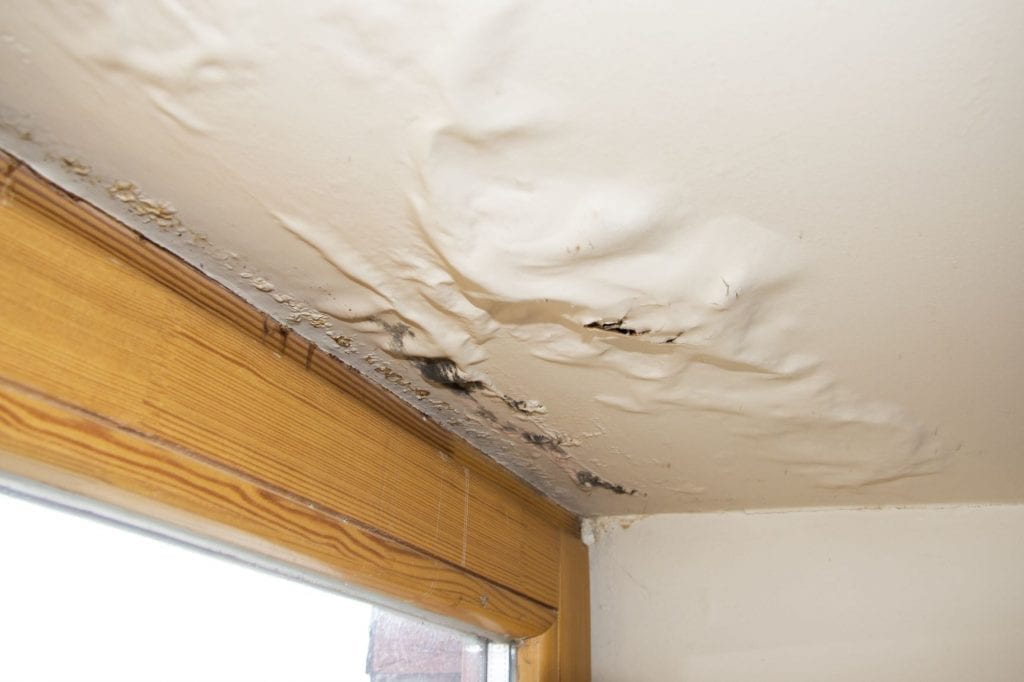What Causes Water Leaks in Ceiling? Water leaks in ceiling can be a major inconvenience and even a safety hazard. They can cause damage to your home’s structure, mold growth, and even electrical problems. If you’re experiencing a water leak in your ceiling, it’s important to identify the cause of the leak as soon as possible so that you can take steps to repair it.

The Problem
There are many things that can cause water leaks in ceilings. Some of the most common causes include:
- Roof damage: This is the most common cause of water leaks in ceilings. Roof damage can be caused by storms, hail, or even just wear and tear.
- Gutters and downspouts: Gutters and downspouts are designed to carry rainwater away from your home. If your gutters or downspouts are damaged or clogged, water can back up and leak into your home.
- Ice dams: Ice dams form when snow melts on your roof and then refreezes at the edge of your roof. This can cause water to back up and leak into your home.
- Plumbing leaks: Plumbing leaks can occur in your home’s pipes, fixtures, or appliances. If you have a plumbing leak, it can eventually lead to a water leak in your ceiling.
- Appliance leaks: Appliances such as dishwashers, washing machines, and refrigerators can leak water if they are not properly installed or maintained.
Roof damage
This damage is the most common cause of water leaks in ceilings. Roof damage can be caused by storms, hail, or even just wear and tear. If your roof is damaged, water can seep through the roof and into your ceiling.
Here are some signs of roof damage:
- Cracks, holes, or missing shingles
- Wavy or sagging shingles
- Loose or damaged flashing
- Dirt, debris, or mold on your roof
If you see any of these signs, it’s important to have your roof inspected by a professional as soon as possible.
Gutters and downspouts
Properly functioning gutters and downspouts actively direct rainwater away from your home, ensuring it doesn’t collect near your property. If these components sustain damage or become clogged, water may accumulate and infiltrate your home.
Here are some signs of gutter or downspout damage:
- Damaged or missing gutters or downspouts
- Clogged gutters or downspouts
- Debris or leaves in your gutters or downspouts
To prevent gutter and downspout leaks, it’s important to keep your gutters and downspouts clean and free of debris.
Ice dams
Ice dams form when snow melts on your roof and then refreezes at the edge of your roof. This can cause water to back up and leak into your home.
Here are some signs of ice dams:
- A buildup of ice at the edge of your roof
- Water dripping from your eaves
- Wet spots on your ceiling
To prevent ice dams, it’s important to install insulation in your attic to prevent the snow from melting.
Read too: Can You Spray Foam Attic Ceiling
Plumbing leaks
Plumbing leaks can occur in your home’s pipes, fixtures, or appliances. If you have a plumbing leak, it can eventually lead to a water leak in your ceiling.
Here are some signs of plumbing leaks:
- Puddles of water under your sinks, toilets, or appliances
- Wet spots on your ceiling
- Leaking faucets or toilets
- Low water pressure
If you see any of these signs, it’s important to have your plumbing system inspected by a professional as soon as possible.
Appliance leaks
Improper installation or maintenance of appliances like dishwashers, washing machines, and refrigerators can lead to water leakage.
Here are some signs of appliance leaks:
- Wet spots on your floor
- Leaking hoses or connections
- Low water pressure
If you see any of these signs, it’s important to have your appliances inspected by a professional as soon as possible.
Troubleshooting
If you’re experiencing a water leak in your ceiling, the first step is to identify the source of the leak. Once you know where the leak is coming from, you can take steps to repair it.